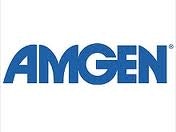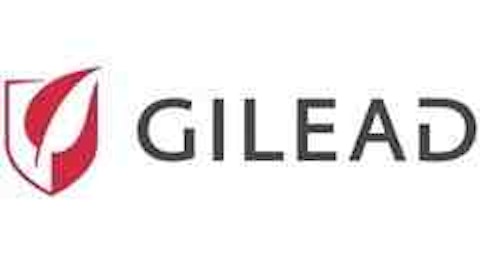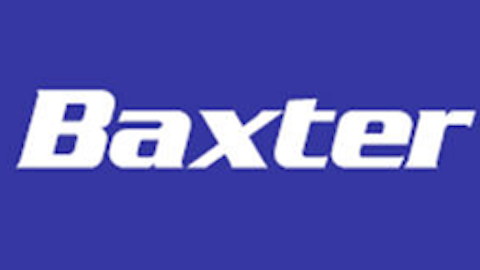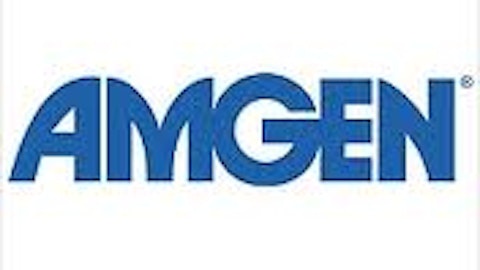
The Market Says “Value”
Comparing Amgen, Inc. (NASDAQ:AMGN) to its peers, it is clear that the market views Amgen’s growth prospects less favorably than those of Celgene Corporation (NASDAQ:CELG), Gilead Sciences, Inc. (NASDAQ:GILD), or Biogen Idec Inc (NASDAQ:BIIB). Despite its 22% run-up YTD, Amgen is still trading around a price/earnings multiple of 18.4, whereas Celgene Corporation (NASDAQ:CELG), Gilead, and Biogen Idec Inc (NASDAQ:BIIB) are each trading closer to a multiple of 40, near or above their all time highs. Instead, Amgen, Inc. (NASDAQ:AMGN) is priced more comparatively with established Big Pharma companies, like Johnson & Johnson (NYSE:JNJ), Pfizer Inc. (NYSE:PFE), and Merck & Co., Inc. (NYSE:MRK), each trading at multiples in the teens and 20s.
The disparity between Amgen, Inc. (NASDAQ:AMGN)’s valuation and that of its biotech brethren likely comes from the relative abundance of near-term catalysts in its peers’ sights.
Celgene Corporation (NASDAQ:CELG) has been soaring on the promise of its multiple myeloma drug Revlimid, as well as its immunological therapy Apremilast, which will eat away psoriatic arthritis revenues from blockbusters Humira (Abbvie), Enbrel (Amgen), and Remicade (Johnson & Johnson (NYSE:JNJ)).
Gilead, a leader in HIV therapy, has investors excited over its groundbreaking oral Hepatitis C remedy sofosbuvir, currently under FDA review. And Biogen Idec Inc (NASDAQ:BIIB) keeps climbing as investors watch its multiple sclerosis drugs Tysabri and Tecfidera.
Amgen, Inc. (NASDAQ:AMGN)’s revenues, which have stabilized in the last several quarters, come from well established drugs, including blockbuster Enbrel. Enbrel sales continue to climb modestly as its price increases, growing 11% from the same period last year to $1.04 billion in Q1 2013. Amgen has done well to protect Enbrel from generic competition, using some fancy legal work to extend its patent to 2028, and revenue will take an additional bump as Pfizer Inc. (NYSE:PFE)’s royalty rights drop by year’s end. Enbrel sales growth has been offset by waning sales of Neupogen and Aranesp.
The Pipeline Says “Growth”
Amgen’s pipeline is pretty impressive. Of the set of currently approved drugs, Amgen is seeking to expand the labels of Prolia for osteoporosis, Xgeva for bone cancers, Vectibix for colorectal cancers, and Aranesp for myelodysplastic syndromes, or diseases of the bone marrow. With their current indications, Prolia and Xgeva saw 46% and 61% sales growth in the first quarter YOY, respectively. Label expansion should provide further revenue growth.
More interestingly, the novel drug candidates in Amgen, Inc. (NASDAQ:AMGN)’s pipeline are worth a second look. Amgen has six new candidates currently in Phase 3 trials, as well as six different drugs in Phase 2 (in addition, some of the drugs in Phase 3 trials also have trials in Phase 2 for other indications).
The most noteworthy development-stage drug is AMG145 for the treatment of hyperlipidemia — a collection of disorders including elevated triglycerides or cholesterol. AMG145, a PCSK9 inhibitor, works by mimicking a naturally occurring mutation that results in decreased basal levels of LDL, or bad, cholesterol.
In several Phase 2 trials, AMG145 had a marked effect on cholesterol levels in patients unresponsive to statins, and as a co-treatment with statins. AMG145 may face competition from Regeneron Pharmaceuticals Inc (NASDAQ:REGN) and Sanofi SA (ADR) (NYSE:SNY)‘s Alirocumab, but the market may be large enough to support both.
The biggest strategic move of late is Amgen’s new biosimilars program. Biosimilars are generic versions of biologic branded drugs, and Amgen is planning production of 6 biosimilars by 2017. Its lead biosimilar candidate is a version of Roche Holding Ltd. (ADR) (OTCMKTS:RHHBY)‘s Herceptin for certain breast cancers, and will be entering a pivotal clinical trial in the second half of 2013. Herceptin saw global sales of $6.3 billion in 2012, so even a portion of this market could help Amgen’s position. There are also plans for generic versions of mega-blockbusters Humira and Remicade in the works. Amgen’s new facility in Singapore should help margins for the mass production of these biosimilars.
Let’s not forget Amgen’s acquisition strategy. Amgen has been at the center of take-over rumors surrounding oncology innovator Onyx Pharmaceuticals, Inc. (NASDAQ:ONXX), and with $2.5 billion in cash (and another $18.7 billion in marketable securities) Amgen has the resources for pipeline growth by acquisition.
A Fool Says…
Wall Street might be short-sighted in its estimate of Amgen’s growth potential. While its current portfolio of marketed drugs may be near its peak potential, its pipeline of diverse drug candidates and clear interest in growth-via-acquisition suggests that its long-term potential may now be on sale at a discount. In the meantime, Amgen has committed to enhancing value for investors with increasing dividends and authorization for an additional $1.6 billion share repurchasing program (as of the Q1 report).
In the upcoming quarterly report, I would keep an eye on Amgen’s long-term debt, as it has increased over the last few years. Additionally, it will be interesting to see how Amgen balances shareholder value, acquisition strategy, and in-house R&D expenses to support growth and value for investors.
The article Is Big Biotech Still Growing? originally appeared on Fool.com and is written by Seth Robey.
Seth Robey has no position in any stocks mentioned. The Motley Fool recommends Celgene and Gilead Sciences (NASDAQ:GILD). Seth is a member of The Motley Fool Blog Network — entries represent the personal opinion of the blogger and are not formally edited.
Copyright © 1995 – 2013 The Motley Fool, LLC. All rights reserved. The Motley Fool has a disclosure policy.




